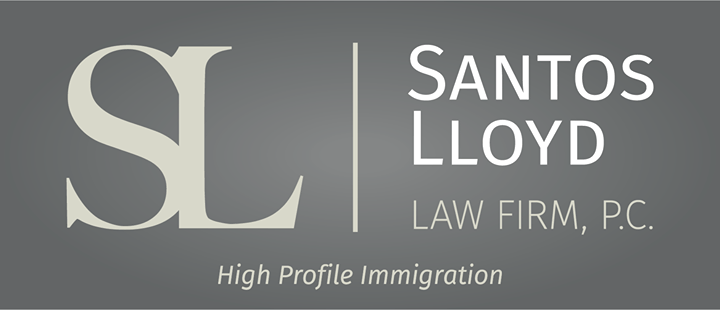Aperçu de la procédure EB-5
Kyle Huffman • March 21, 2024
Click here to read this article in English
Se lancer dans l'aventure de l'immigration EB-5 est à la fois une démarche personnelle profonde et une décision d'investissement stratégique. Pour les personnes qui souhaitent faire des États-Unis leur nouveau foyer tout en contribuant à son paysage économique, le programme d'immigration EB-5 offre une voie d'accès unique. Ce programme, mis en place par le gouvernement américain en 1990, offre aux investisseurs étrangers la possibilité d'obtenir une résidence permanente aux États-Unis en investissant dans des entreprises créatrices d'emplois. Toutefois, pour s'y retrouver dans la complexité du processus EB-5, il est nécessaire de bien en comprendre les subtilités, les exigences et les pièges potentiels. Dans ce guide, nous fournissons un bref aperçu des étapes et des documents impliqués dans le processus d'immigration EB-5, en mettant en lumière ses composants clés, les critères d'éligibilité, les options d'investissement et les étapes de la procédure, permettant ainsi aux investisseurs potentiels d'acquérir les connaissances nécessaires pour s'embarquer dans ce voyage transformateur en toute confiance.
Avant de sélectionner un projet et de réaliser l'investissement, il est important pour un investisseur EB-5 de rencontrer un avocat spécialisé dans l'immigration afin d'élaborer une stratégie pour la demande. Il est nécessaire de prouver au service de l'immigration que tous les fonds utilisés dans l'investissement ont été gagnés et conservés légalement. Votre avocat voudra donc comprendre d'où vient l'argent de l'investissement et où il a été conservé depuis qu'il a été gagné.
Après s'être assuré de l'origine et de la traçabilité des fonds, l'investisseur peut choisir un projet dans lequel investir. Suite à l'adoption du EB-5 Reform & Integrity Act, certains projets d'investissement ont déjà été préapprouvés par l'USCIS en remplissant le formulaire I-956 et en recevant la désignation de Regional Investment Center (centre d'investissement régional). L'investissement minimum requis est de 1 050 000 dollars par défaut ; toutefois, ce montant est réduit à 800 000 dollars pour les centres d'investissement situés dans des "zones d'emploi ciblées".
Après avoir soumis l'investissement au centre régional, l'investisseur travaillera avec son avocat pour créer la pétition I-526. À ce stade du dossier, il est temps de montrer à l'USCIS la source et la traçabilité de tous les fonds utilisés pour l'investissement. Les types de documents requis pour démontrer la source légale et la traçabilité des fonds sont extrêmement vastes et dépendent fortement de l'origine de l'argent dans chaque cas particulier, mais les documents les plus courants comprennent les formulaires fiscaux W-2 ou 1099, les déclarations fiscales fédérales et nationales, les relevés de compte bancaire, les contrats d'achat et de vente de biens immobiliers, les certificats d'actions, les contrats de prêt, les documents d'héritage et les relevés de virement bancaire, parmi beaucoup d'autres possibilités.
Les candidats à l'EB-5 peuvent soit obtenir leur carte verte
par l'intermédiaire de l'USCIS en déposant une demande d'ajustement de statut (I-485), soit par l'intermédiaire du consulat de leur pays d'origine. S'il se trouve déjà aux États-Unis avec un autre statut valide, la demande d'ajustement du statut peut être déposée en même temps que la pétition I-526. S'il passe par un consulat à l'étranger, l'investisseur devra attendre que la demande I-526 soit approuvée avant d'entamer la procédure consulaire. Le demandeur principal, ainsi que son conjoint et ses enfants célibataires de moins de 21 ans, peuvent obtenir la résidence permanente par le biais de la procédure EB-5.
À l'issue de l'une ou l'autre procédure, qu'il s'agisse d'une demande de carte verte aux États-Unis ou d'une demande d'entrée par l'intermédiaire d'un consulat, l'USCIS délivre des cartes vertes conditionnelles, d'une durée de validité de deux ans. Au cours des trois derniers mois précédant l'expiration de la carte verte conditionnelle, l'investisseur et sa famille devront déposer une demande I-829
de levée des conditions d'obtention de la carte verte. À ce stade, près de deux ans après l'investissement, le service de l'immigration confirme que l'investissement reste dans le projet et que les dix emplois requis ont été créés. Après l'approbation de la demande I-829, l'investisseur et sa famille recevront une carte verte permanente, d'une durée de validité de 10 ans.
L'investisseur et sa famille pourront demander la nationalité américaine cinq ans après la délivrance de la carte verte initiale. La carte verte conditionnelle est prise en compte à cette fin, de sorte que la citoyenneté deviendra une possibilité environ trois ans après la délivrance des cartes vertes permanentes.
En conclusion, le programme EB-5 pour les immigrants investisseurs constitue un moyen unique pour les individus du monde entier de réaliser leurs aspirations à vivre et à prospérer aux États-Unis. Grâce à des investissements stratégiques et à la création d'emplois, les participants obtiennent non seulement une résidence permanente, mais contribuent également à la croissance économique et à la prospérité du pays. Toutefois, il est essentiel que les investisseurs potentiels abordent le processus EB-5 avec une planification méticuleuse, des recherches approfondies et des conseils d'experts pour en surmonter les complexités avec succès. En comprenant les exigences du programme, en explorant les options d'investissement et en respectant les lignes directrices de la procédure, les candidats à l'immigration peuvent s'engager dans la voie de l'EB-5 avec clarté et confiance. En fin de compte, le programme EB-5 représente plus qu'une simple voie d'accès à la résidence : il incarne l'esprit d'entreprise, d'innovation et d'opportunité qui définit le rêve américain.
Si vous pensez pouvoir bénéficier du programme EB-5 ou si vous avez des questions, prenez rendez-vous avec l'un de nos avocats expérimentés et nous nous ferons un plaisir de vous aider.
Ce blog n'est pas destiné à fournir des conseils juridiques et rien ici ne doit être interprété comme établissant une relation avocat-client. Veuillez prendre rendez-vous avec un avocat spécialisé en droit de l'immigration avant d'agir sur la base de toute information lue ici.

Once you have connected with a college program, have been admitted to the school, and deemed eligible to compete athletically, you will need to secure an F-1 student visa in order to actually attend your new college and begin your time as a student athlete. The first step in the visa process is to receive your Form I-2

For many talented athletes around the world, U.S. college athletics represent a remarkable opportunity to combine elite athletic competition with higher education. In sports such as basketball, soccer, track and field, and tennis, among others, hundreds of colleges and universities across the United States offer struct

Under the new regulation, if a person filed or files Form I-589, Application for Asylum and for Withholding of Removal after October 1, 2024, and the application remains pending with USCIS for 365 days, the applicant must pay an Annual Asylum Fee (AAF) on the one-year anniversary of his or her filing date.



